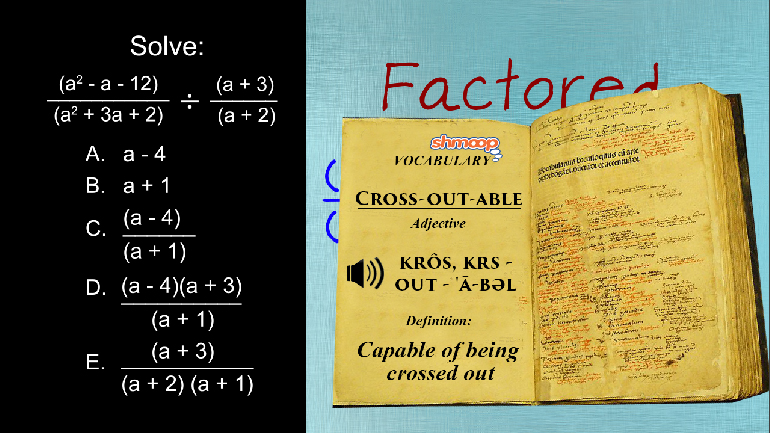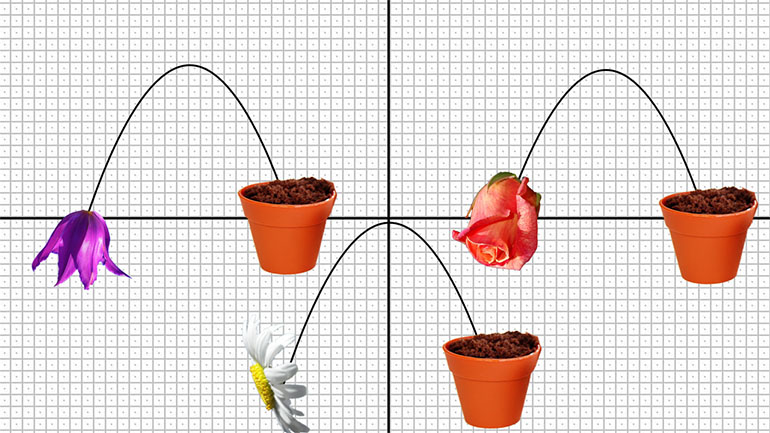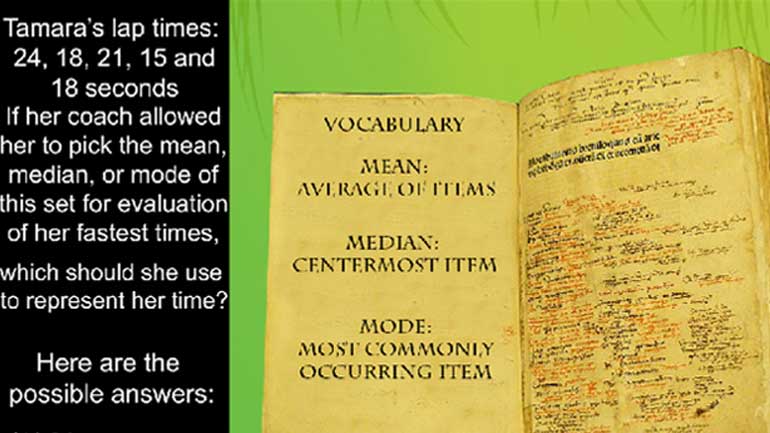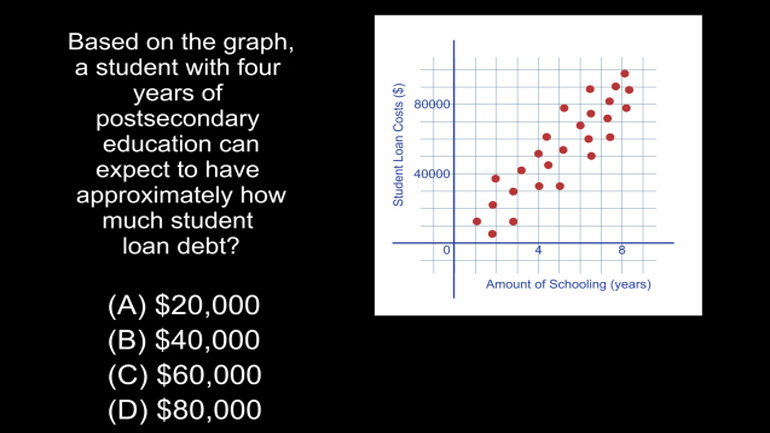ShmoopTube
Where Monty Python meets your 10th grade teacher.
Search Thousands of Shmoop Videos
Algebra I Videos 81 videos
ACT Math Intermediate Algebra Drill 2, Problem 2. How else can the expression be written?
GED Math 1.3 Rational Numbers. Which answer best fills in the blank?
We don't like knocking people down to size, but we do like simplifying radicals. Join us?
Factoring Trinomials of the Type ax^2 + bx +c 2330 Views
Share It!
Description:
There are a variety of methods for factoring trinomials, Complete the square! Use the quadratic formula! Or be a genius and do it in your brain!
Transcript
- 00:04
Factoring Trinomials of Type ax2 +bx +c, a la Shmoop
- 00:10
Farmer Jen Etticks produces donut-shaped watermelons. [Farmer carrying a watermelon]
- 00:14
Like Godzilla, they’re huge in Japan.
- 00:17
There’s just one problem: tossing the spoiled watermelons into the ocean has had some… [Farmer throws watermelon into the ocean]
- 00:22
undesirable effects.
Full Transcript
- 00:24
The guy in accounting says that the amount of spoilage, or “s”…
- 00:28
…for producing w number of watermelons per day can be approximated by the formula: [accounting guy discussing formula]
- 00:34
s equals 6w squared plus 13w plus 2.
- 00:40
What daily production level will give Jen zero spoilage?
- 00:45
This looks like a trinomial equation of the type ax squared plus bx plus c; [man points to trinomial equation]
- 00:50
To find the answer, we’re going to need to factor out the a and the c in the equation.
- 00:55
We’ll do this by using a table. [Dinosaur jumps on a table]
- 00:58
Our table has four columns.
- 01:00
The first involves our “a-term”, 6w squared.
- 01:05
There are two possible ways to factor 6w squared: 3w and 2w, and 6w and w.
- 01:13
The second column factors our “c-term”, 2.
- 01:17
The only possible factors are 2 and 1.
- 01:20
The third and fourth columns use the previous two columns to decipher possible “b-terms”.
- 01:26
Combinations of the a-term and c-term factors are combined in the “possible binomial factors” [arrow pointing to binomial factors column]
- 01:32
column.
- 01:33
If we take a look at the first row of the first two columns, our possible binomial factors
- 01:37
come out to:
- 01:38
(3w + 2) times (2w + 1), and (3w+1) times (2w+2).
- 01:46
For the second row, we get (6w +2) times (w+1), and (6w+1) times (2+2).
- 01:55
Then, the sum of the inner and outer products are used to calculate what the b-term for
- 02:00
that product would be.
- 02:01
So for (3w +2) times (2w + 1), we take the outer product first, which is 3w times 1, [table of factoring trinomials]
- 02:10
and add it to the inner products: 2w times 2.
- 02:14
3w times 1 is 3w, and 2w times 2 is 4w.
- 02:19
So the sum is 7w.
- 02:21
Not the right b-term...so we keep trying. [man points to b-term]
- 02:24
After doing all the calculations, we can see that the factors (6w + 2) and (w + 2) give
- 02:30
us our correct b-term, 13w, hiding out like a bunny at a fox convention. [fox hiding among bunnies]
- 02:35
Our work can be checked using FOIL, multiplying out the first terms, outer terms, inner terms,
- 02:42
and last terms,.
- 02:44
We add them together…and check to see that they equal our original trinomial. [man looking at the completed formula]
- 02:50
We passed the checkpoint, which means when spoilage equals zero, one of our factors must
- 02:55
also equal zero.
- 02:58
When we set each factor to zero and solve for w…
- 03:00
…we see there is zero spoilage when our daily watermelon production equals negative
- 03:05
one sixth and negative 2. [doughnut watermelons appear]
- 03:07
Uh-oh.
- 03:08
Since it’s impossible to have negative production…
- 03:10
…looks like Farmer Jen has no choice but to introduce spoiled watermelons into the [farmer Jen throwing a watermelon into the ocean]
- 03:16
food supply.
- 03:17
Good luck, everyone.
Related Videos
CAHSEE Math: Algebra I Drill 6, Problem 2. Simplify the polynomial.
GED Math 3.1 Expression and Equations. What is the maximum output impedance that the amplifiers can have?
Math Elementary Algebra: Drill 1, Problem 4. Solve for y using substitution.





















































































